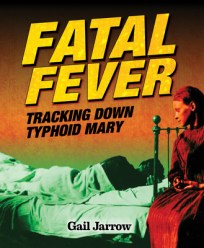
Begin at the End
 Two-time Pulitzer prize winner Jon Franklin, author of Writing for Story: Craft Secrets of Dramatic Nonfiction, writes “The story doesn’t pivot on the beginning, it pivots on the ending – so write that first.” I’ve discovered that the same trick works when I need to read like a writer.
Two-time Pulitzer prize winner Jon Franklin, author of Writing for Story: Craft Secrets of Dramatic Nonfiction, writes “The story doesn’t pivot on the beginning, it pivots on the ending – so write that first.” I’ve discovered that the same trick works when I need to read like a writer.
Narrative, expository, opinion pieces – no matter the approach – informational texts are written to convey something. Be it a concept, a scientific process, personal growth, an abstract theme, a historical truth, whatever, the entire text builds towards it. So, if I want to understand the building blocks an author uses, it makes sense to read the conclusion first to know were the book is going.
Try it.
The books in this month’s list provide a perfect opportunity; they are all about women’s history and offer great comparison opportunities.
Pick up one of the books and read the final chapter – not the author’s note, or any of the back matter, but the chapter intended as the official conclusion. Ask yourself: What do I notice? Who are the characters? What is the tone?
Ask: What is the point of this book? List some questions that reading the conclusion first brings up.

When thinking about the structure of a text, I try to sketch shapes as representations. In Hidden Figures would I find a triangular structure, pointing to Johnson? A chain of interlocked links? A circle where the conclusion brings us back to the beginning?
This is inquiry.
This is close reading!

Driven by that question, I read the book. I sketch three pillars; one for each story. Each stands independently, illustrating the life of one girl. But together those pillars support a bigger idea, a universal idea that the last verse just happens to illustrate perfectly. Now that’s skill: conveying a universal truth that a reader laps up before they even realize it!
Speaking of universal truths, Jon Franklin instructs “if those truths seem like clichés . . . so much the better.” That surprised me at first, but then I compare a few of the books and it starts to make sense. Universal truths are eternal truths, messages we have all heard before but still need to hear again and again.

When I picked up Girls Think of Everything: Stories of Ingenious Inventions by Women by Catherine Thimmesh, I was intrigued to find the book concluded with “Your Turn.” This segment uses direct address and includes specifics on how to apply for a patent. An indirect challenge to the reader to get busy inventing!
It wasn’t till I skimmed through the rest of the book, though, that I realized another gem of the conclusion. It took the book’s premise (female inventors) up a notch. It highlighted an inventor who was not only female, but also a young female. By that point I was totally jazzed to dig into the intro to see how Thimmesh set up the book for this romp through chocolate chip cookies, Liquid Paper, and space bumpers, leading us to the universal truth of the power of girls as inventors.
So, I challenge you. Pick up a book and begin at the end. You might be amazed at where I takes you!


Heather L. Montgomery writes books for kids who are wild about animals. How does she conclude her books? With a story of a kid who discovered a new species, an insect who eats his sister and her own close encounter with the skin of a skunk!
Learn more at www.HeatherLMontgomery.com
O.O.L.F
Some authoritative works on crafting nonfiction:
Writing for Story: Craft Secrets of Dramatic Nonfiction by a Two-Time Pulitzer Prize Winner, by Jon Franklin, which focuses on crafting an effective structure for narrative nonfiction
The Art of Creative Nonfiction: Writing and Selling the Literature of Reality, by Lee Gutkind, in which the guru of creative nonfiction looks at the genre, immersion techniques, framing devices, essays, and more
Storycraft: The Complete Guide to Writing Narrative Nonfiction, by Jack Hart, which provides a balanced look at topics such as structure, character, dialog, reporting and ethics
Anatomy of Nonfiction: Writing True Stories for Children, by Margery Facklam and Peggy Thomas, which dissects the research process and provides guidance on submitting to the children’s market










